Abstract
Building brands at social media is never an easy task as the emerging of exciting contents at social media, consumers are easily swayed away in a matter of seconds and therefore marketers need to upgrade themselves in retaining and capture the 3.196 billion of social media users. Previous research had been done on social media’s influence on purchase decision in the automobile industry with German speaking respondents where it had created a research gap for studying Malaysian respondents towards a Malaysian textile brand on the consumers’ perception over social media. The research design will be qualitative in application of interviews and transcribe using thematic analysis. The practical findings are crucial to the Malaysian Trade Ministry in understanding the relationship between a brand and consumers through the dimension of social media while for industry practice in understanding challenges in building brand equity through social media where allowing marketers to strategize.
Keywords: Social mediaFacebookCommunicationBrandingMalaysia
Introduction
3.196 billion of social media users in 2018 are in the digital market without anyone realising it where it has led to a new gateway of influencing power for consumers in perceiving a brand, buying’s decision and interaction among individuals; in short, it’s about people to discover new connections in just seconds. It is undeniable that social media today is the key to unlock the interest of future consumers regardless geographically where it’s about time for brands in making their mark on the digital world and significantly altering the marketing strategies (Hutter, Hautz, Dennhardt, & Füller, 2013). As in the Malaysia’s context; Facebook is one of the frequent visited social website in Malaysia with the monthly traffic of 163, 300,00 0 visits and e-commerce spending on furniture & appliances amounting to RM 553 million (Figure
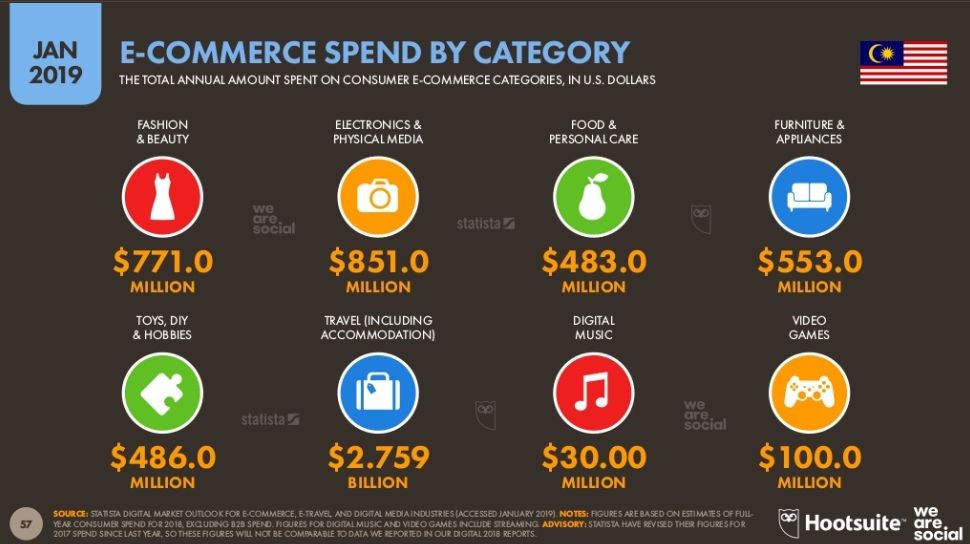
The background of the brand
Eastern Decorator Sdn. Bhd. (ED) is a Malaysian home grown brand and a multinational company and currently is one of the Southeast Asia largest soft garment company with the HQ at Ipoh, Perak of Malaysia. As a global manufacturer of multiple brands as such AKEMI, Hooga, White Room, AKEMI Uchi and much more, ED has able to place itself in every main region of Asian countries and at the same time in having transactions with over 30 countries worldwide. Till date, ED has 2,100 employees in total with 50 years in manufacturing experience, retailing with 1,200 points of sales, managing virtual markets, innovating 2,000 designs yearly and having a portfolio of over 30 brands. Over the years, ED has expanded tremendously in the production plant where it is covering of 60,000 square meters while the distribution centre is covering of 50,000 square meters in administrative offices in multi country namely Singapore, Thailand, Indonesia, Vietnam and Cambodia.
To catch up with the latest sales trend, AKEMI is making presence at social media platforms due to rapid changes in marketing world. The way of doing business had changed entirely due to globalization and advancement of technology. Thus, social media today is the key to unlock the interest of future consumers or creating the demand of existing consumers as the info can be view regardless of time zone, place and two ways communication. According to Ducoffe (1996) web advertisement does influence on enjoyment, knowledge and irritating feeling. Therefore, any miscommunication of social media is disastrous especially at Facebook with a monthly traffic of 163 million users (Figure
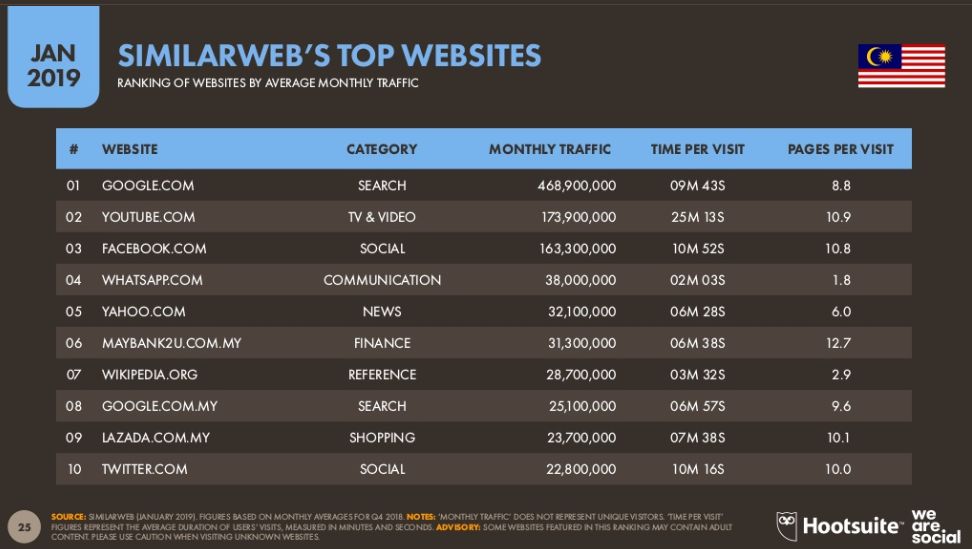
Problem Statement
To a business; investments are about dollars and cents, reaching 24 million Facebook users (Figure
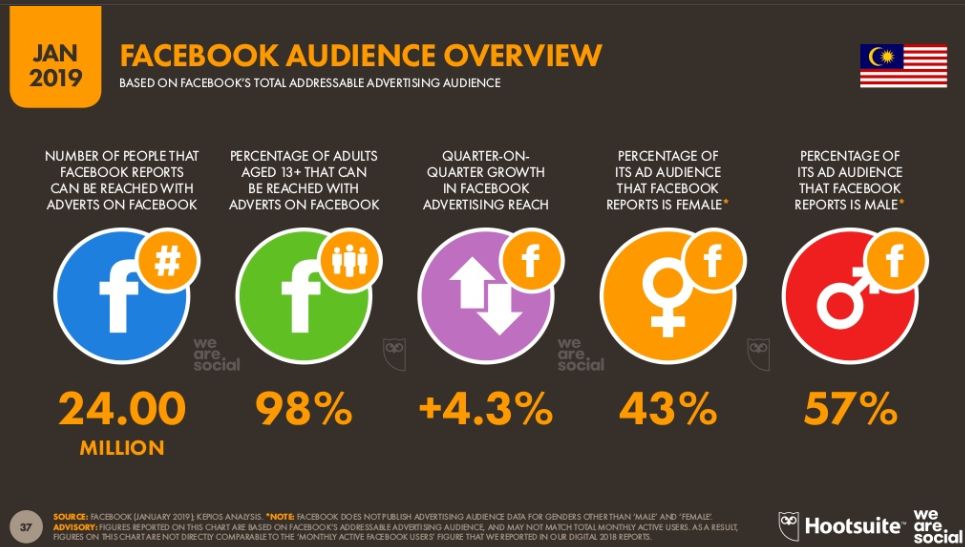
The brand awareness
Although AKEMI brand is having the 45,128 likes and 45,271 followers at Facebook at year 2019, it is still considered low interaction as Malaysia is having 24 million of FB users.
How the AKEMI brand is perceived at social media
Emotions play an important role in determining the excitement to purchase as the brand needs to understand the mind-set behind the screen and how to trigger the consumers to spend on the brand.
Research Questions
Business today no longer depending on bricks and mortars as it is facing closure as well; for example Walgreens inclosing 200 locations across the United States as part of its plan in cost cutting (CNN Business) where in reality, companies need to create high octane in brand building at digital world as it is a platform for the consumers and non-consumers to share the common interest and awareness. The individuals tend to make friends with each other and communicate on the brand and products. Nevertheless, brands tend to neglect this opportunities and it turns out where the brand are forgotten or negative perception; Wetzer, Zeelenberg, and Pieters (2007) relates that annoyed consumers tend to take vengeance by constructing negative online reviews while unhappy consumers will dramatize the negative reviews in seeking happiness while negative online reviews will weaken the brand’s value and it will also impact negatively their excitement to purchase (Fagerstrøm & Ghinea, 2011). Therefore, the research objective is to explore the challenges in brand building and consumers’ perception towards a brand from textile manufacturing industry from Malaysia.
What are the challenges in influencing AKEMI’s brand building at Facebook?
How do consumers perceive about AKEMI brand on Facebook?
Purpose of the Study
The case study will be able to highlight on how AKEMI to overcome communication challenges. The social media is powerful and able to communicate with large pool of consumers, attract them and influence them in making decision. Further, the study will be looking into how negative interaction will cause the bad reputation towards the brand, where emotions are able to spread and negative emotions lead multi variety of emotional expressions. As a whole, the contributions from the case study will be able to provide insights for SMEs in Malaysia in creating exciting valued content and to interact with the consumers. The qualitative study will be able to unearth consumers’ perception towards the textile brand through one-to-one interview with semi structured questions and analyse through thematic analysis. The study is crucial to Malaysia in developing the business support chain in the digital world with the ultimatum of exposing the brand globally; and in return bringing growth to stakeholders, strengthening the currency and utilising full capacity of Facebook as it is the most popular business platform for now with 2,200 million users worldwide (Figure
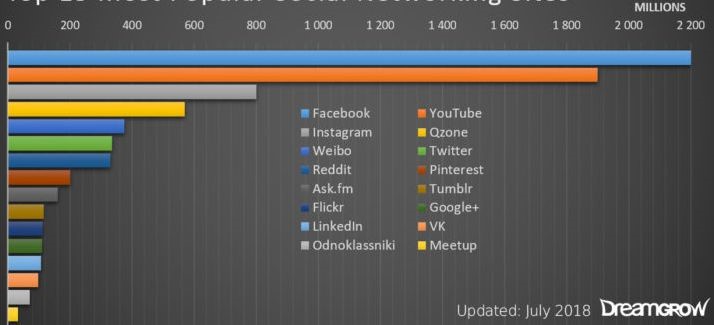
Source: www.dreamgrow.com
Knowledge
To understand social media’s influence towards decision making process of AKEMI brand scholarly research of factors influencing purchase decision on the solutions for gravitate consumers’ interest towards a brand in the digital world.
Industrial practice
To explore of consumers’ behaviour as the basic fundamental industry practitioners in strategizing the challenges in building brand equity through social media.
How Small and Medium Enterprise (SMEs) in Malaysia managing social marketing, creating meaningful contents and exploring consumers’ insights.
Malaysian Trade Ministry policy makers in understanding current Malaysian brands in the digital world as manufacturing contribute 23% to Malaysia’s GDP of RM 1.2 trillion (Figure 05).
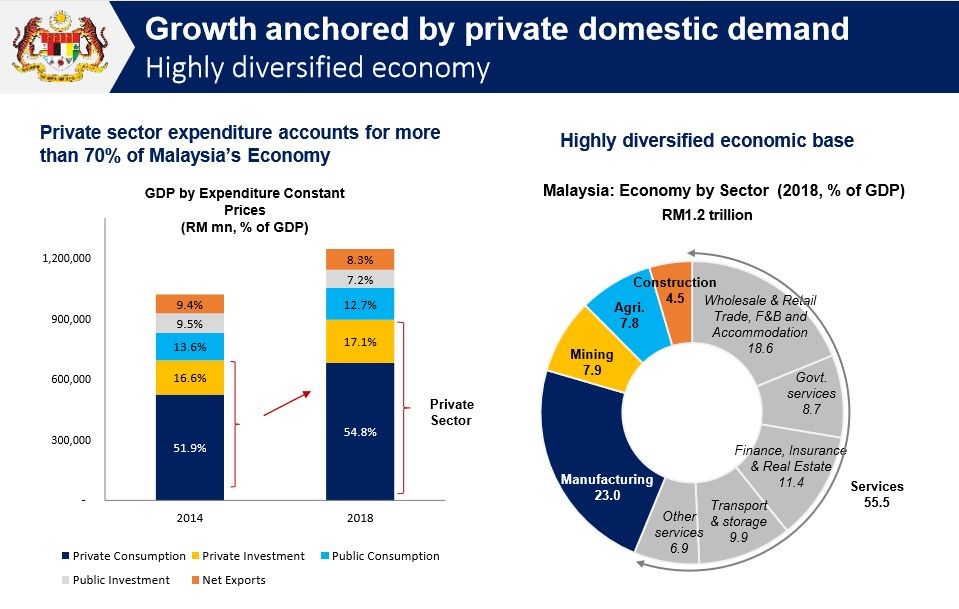
Source: Malaysia External Trade Development Corporation
Research Methods
This research employed a qualitative method as it is to explore consumers’ perception and to understand of brand building at social media. The data collection method is through interviews by face to face or via Skype, observations and reviewing journals, magazines and the brand’s website. As the exploration is an inductive where basically, it is not having any boundaries of consumers’ input (what annoys them), suggestions (solutions to improve), trust creation between interviewer and the interviewee. Unit of analysis refers to a group of people, events, or things of interest that have been the target of researcher in investigating. In this study, the consumers and stakeholders are the unit of analysis.
Research Design
Section
on social media.
Section
Section
The boundaries of respondents & transcribing
Time and place (Creswell, 2003): For the case study, it is focusing consumers from Malaysia.
Time and activity (Stake, 1995): During interaction with textile brand at Facebook.
Definition and context (Miles & Huberman, 1994): Textile brand’s communication and the context of consumers’ excitement to purchase.
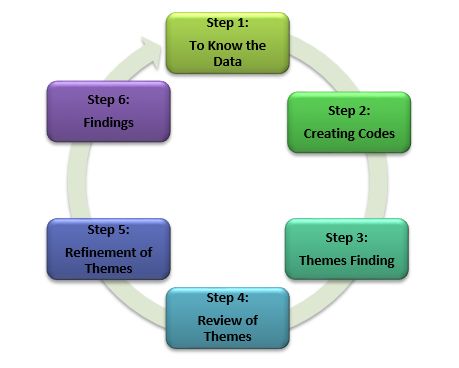
For transcribing the data, the researchers apply the Six-Phrase Framework Thematic (Figure
Findings
This chapter presents the results of the in-depth semi-structured interviews with the randomly informants and have experience regarding on AKEMI brand. The findings of the interviews were coded and a technique on processing qualitative raw data was adopted. For qualitative study, coding is an integral part of data analysis‟ and the coded are tags and labels that give meaning to the descriptive or inferential information (Miles & Huberman, 1994) that develop during research. There were five informants interviewed in randomly.
Personal information, involvement in social media, shopping method and interaction on social media
RS1 have involved in social media about 5 years, RS2 in 6 years, R3 a social media user for 8 years, RS4 in 7 years and RS5 a social media user for 10 years. A part of that, all informants (RS1, RS2, RS3, RS4 and RS5) are using Facebook as a main shopping guide in social media.
AKEMI brand building challenges and interaction towards consumer and stakeholders
RS1 and RS2 shared the same feeling of being at “home” but RS1 added that he needs information on products’ value through FB while RS2 mentioned that he is “lost” at the brand’s FB. Meanwhile, RS3 feels the brand’s love but disorganized contents while RS4 stated that feeling good at the brand however the FB is stagnant, language barriers and out of trend. Last but not least, RS5 shared that AKEMI’s brand’s feeling is about close to home but some contents’ are not attractive.
Perception and outcomes towards AKEMI’s Facebook’s content in future
RS 1 & RS 5 are sharing the same perception that the brand shall be more educative while RS 2 and RS 3 are looking forward to view the brand through virtual reality with live interaction. RS 4 and RS 5 concluded that the contents need to be creative, quality, practical with multiple languages.
Conclusion
With the advancement of the social media, having active interaction are becoming more important yet technical as the brand needs to attract and get the consumers’ e-word of mouth. The case study of the Malaysian textile brand will shed a light the development of a Malaysian brand at the social media world and era of digital marketing. However, we must take note that findings are from soft garment industry and it might not be proper in representing all businesses in Malaysia. In order to have a more holistic approach, future researches could be on different brands on social media’s platform and other sectors. The case study is able to open to future studies as the study is only focusing on soft garments where it is unable to reflect the other industries in Malaysia where for future studies, researchers can have option for more respondents, expansion to consumers who are from ASEAN countries and revealing factors creating annoyance in social media through qualitative research method as well.
Acknowledgments
Associate Professor Dr. Salmi Mohd Isa;
Associate Professor Dr. Ellisha Nasruddin;
Ms. Koay Sui Sen (Susan), The COO of Eastern Decorator Sdn. Bhd;
Eastern Decorator Sdn. Bhd.;
Ms. Wong Cheah Ling;
My Parents.
References
- Braun, V., & Clarke, V. (2006). Using thematic analysis in psychology. Qualitative research in psychology, 3(2), 77-101.
- Creswell, J. W. (2003). Research Design: Qualitative, Quantitative, and mixed methods Approaches. Thousand Oaks: Sage.
- Ducoffe, R. H. (1996), Advertising Value and Advertising on the Web. Journal of Advertising Research, 36(5), 21-35.
- Fagerstrøm, A., & Ghinea, G. (2011). On the motivating impact of price and online recommendations at the point of online purchase. International Journal of Information Management, 31(2), 103-110.
- Hutter, K., Hautz, J., Dennhardt, S., & Füller, J. (2013). The impact of user interactions in social media on brand awareness and purchase intention: the case of MINI on Facebook. Journal of Product & Brand Management, 22(5-6), 342-351.
- Miles, M. B., & Huberman, A. M. (1994). Qualitative Data Analysis: An Expanded Sourcebook. Thousand Oaks, CA: Sage.
- Stake, R. E. (1995). The art of case study research. Thousand Oaks, CA: Sage.
- Wetzer, I. M., Zeelenberg, M., & Pieters, R. (2007). Consequences of socially sharing emotions: testing the emotion‐response congruency hypothesis. Eur. J. Soc. Psychol., 37, 1310-1324. https://doi.org/10.1002/ejsp.396
Copyright information

This work is licensed under a Creative Commons Attribution-NonCommercial-NoDerivatives 4.0 International License.
About this article
Publication Date
30 March 2020
Article Doi
eBook ISBN
978-1-80296-080-8
Publisher
European Publisher
Volume
81
Print ISBN (optional)
-
Edition Number
1st Edition
Pages
1-839
Subjects
Business, innovation, sustainability, development studies
Cite this article as:
Chong, C. K., & Salmi, M. I. (2020). Akemi In Communicate To Win Big. In N. Baba Rahim (Ed.), Multidisciplinary Research as Agent of Change for Industrial Revolution 4.0, vol 81. European Proceedings of Social and Behavioural Sciences (pp. 189-196). European Publisher. https://doi.org/10.15405/epsbs.2020.03.03.24
